Conversion rates tell you how well your website is turning visitors into paying customers. Improving your conversion rate is about appealing to customer behavior and buying habits.
But getting your customers toclickisn’t an easy feat, especially with all the noise online today.
Does your customers’ behavior feel like a mystery to you? How can you possibly know what your site visitors are thinking?
You can start answering these questions by unpacking your site analytics. I’ve spoken to a handful of ecommerce experts to learn what reports help you better understand your site visitors and optimize your website.
Below, you’ll find five Google Analytics and Shopify reports that unearth the information you need to increase your conversion ratesandsales.
Note: Running these reports won’t immediately increase your conversion rates. To improve your ecommerce CRO, consider setting goals against which you can compare your site performance. Learn more aboutsetting up goals for Google Analytics here.
1. New vs. returning visitors
The first-time versus returning customer sales report shows the value of orders placed by first-time and returning customers.
- First-time customersare people who order from your ecommerce business for the first time.
- Areturning customeris someone who’s placed an order and already has an order history.
New traffic is exciting, but your number of returning visitors indicates that your website, product, and/or purchase experience left a positive impression.
Run this report in your Shopify admin by clickingAnalytics>Customers>First-time vs returning customer sales.
You can click “Group by” to select the time unit that you want to view the total sales by in the graph:
- 小时
- Day
- Week
- Month
- Quarter
- Year
- 小时of day
- Day of week
- Month of year
The key to increasing ecommerce CRO is understanding your audience and how they shop—new visitors and returning visitors have very different buying habits.
According to a2018 study, returning visitors:
- Added items to shopping carts65.16% more than new visitors
- Converted 73.72% more
- Spent 16.15% more per transaction
Why? Well, a new visitor is likely browsing your site and getting familiar with your products, similar to a window shopper. Unless they came to your site via word-of-mouth, they might not be looking to make a purchase immediately.
Use newsletter prompts, pop-up discounts, and cart abandonment emails to engage with new visitors. If they make a purchase, great! If not, use these levers to provide a pleasant experience, build a positive relationship, and encourage them to return.
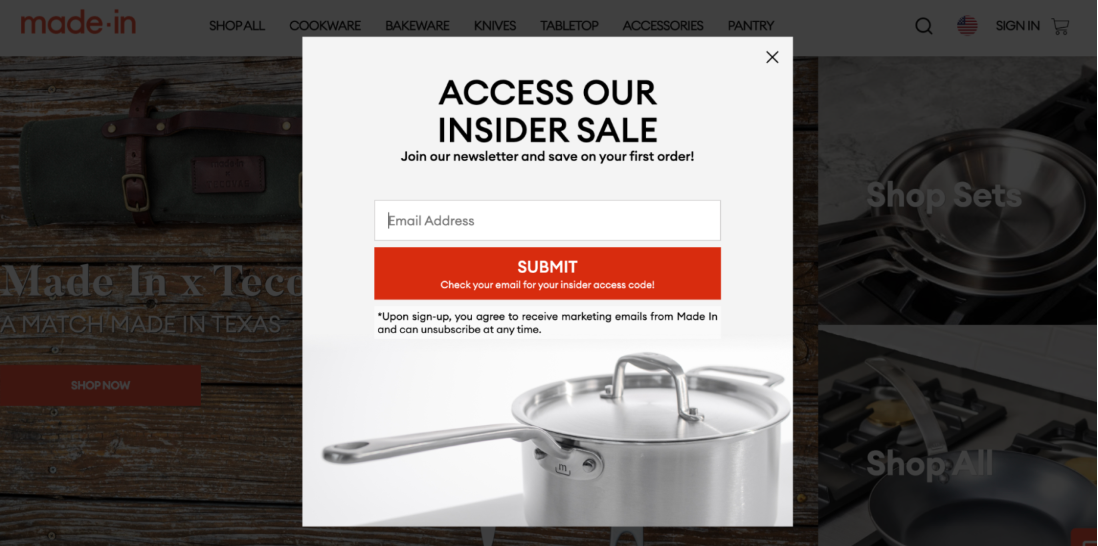
On the other hand, returning visitors are already familiar with your store and probably visiting to shop (if they haven’t already). The best way to welcome return visitors to your website is withecommerce personalization tacticslike customized product suggestions and user-generated content. Consider including the latter on your product pages alongside professional product photography.

Not only does ecommerce personalization make returning visitors feel recognized, it may cut their path to purchase in half. Plus, personalized shopping experiences have yieldedup to 15% higher conversion rates.
2. Acquisition by source/medium
How does your website acquire traffic? Once people land on your site, where do they go from there?
Run this report in Google Analytics by clicking Acquisition > Traffic acquisition

First, if any paid campaigns aren’t driving traffic, this report will show you where you can tweak your projects. Are your Google ads barely making a dent? Turn them off and reroute those efforts into organic social media or email campaigns that may attract more visitors.
使用这个报告来跟踪你的用户体验those digital marketing campaigns driving traffic. This is particularly helpful if you see high traffic but low conversion rates.
Do all paid ads, social posts, and email campaigns match to the landing pages they link? If not—and your visitors are expecting a different product or offer—this could be the culprit of a low ecommerce conversion rate.
Another variation of this overview report is thepath exploration reportin Google Analytics. This provides a graphical representation of visitor traffic, from where they entered your site to what pages they visited and where they exited (which we’ll unpack next).
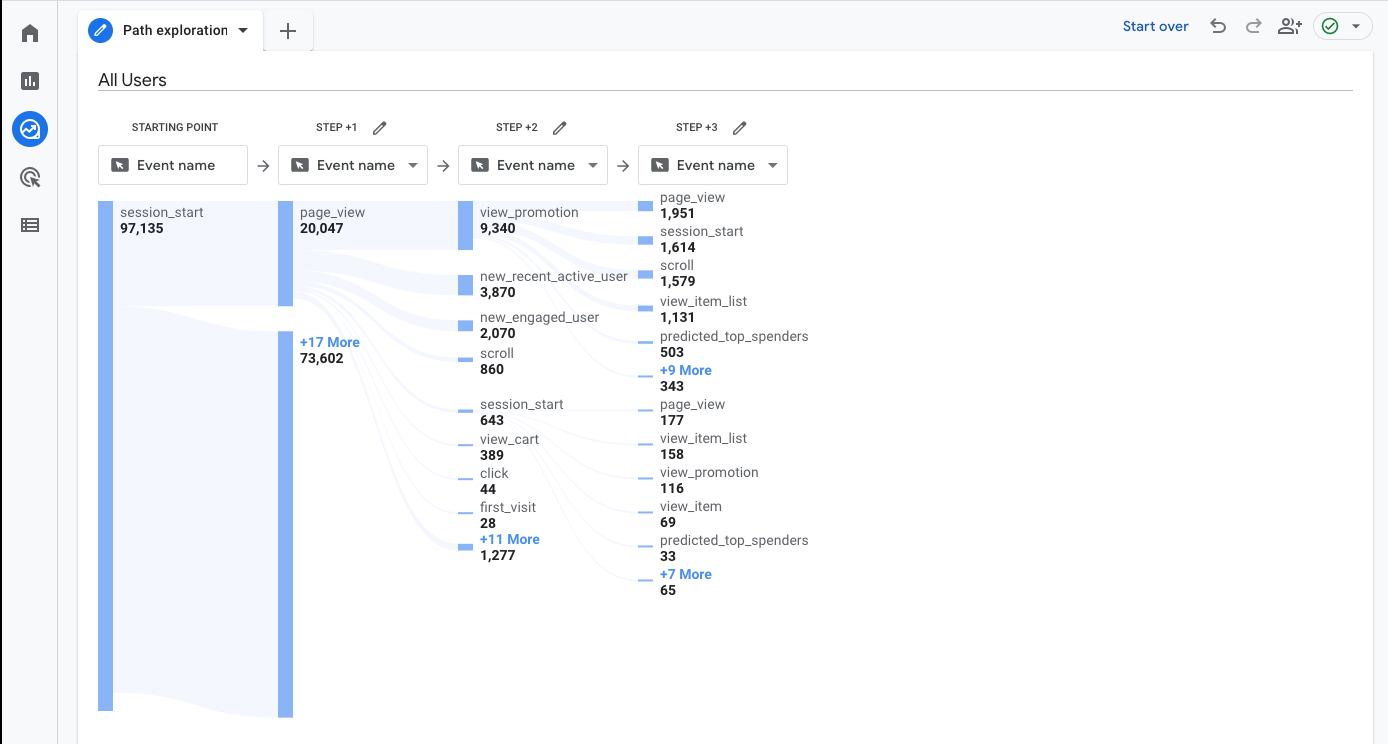
The path exploration report is a helpful addition to your acquisition analysis, as it identifies any loops.
“A loop occurs when visitors repeatedly navigate back and forth between two pages, such as clicking from the homepage to a product grid page then back to the homepage,” saysJon MacDonald, founder of The Good.
Loops may indicate confusion on a particular page. This insight gives you an opportunity to clear up the information and help visitors become customers.”
3. Exit pages
The pages on which your visitors choose to exit your site reveal where your user experience is lacking—or breaking altogether. While the path exploration report provides this information, we encourage you to check out the exit report to dig deeper into where your visitors left your site.
在谷歌分析通过搜索”中运行这个报告Exit pages [timeframe]” and the Insights bar will populate on the right side of the site with relevant insights.
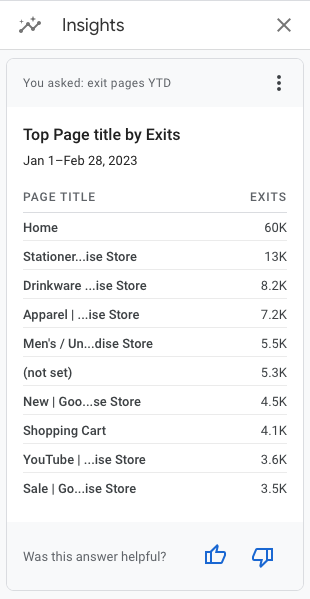
Review the specific pages from which visitors frequently exit. Don’t worry if your homepage is at the top of the list—that’s pretty common. If they’re product pages or high intent pages, like a Contact Us page, review your website copy, product imagery, and customer reviews.
Examine how each page is designed. CRO expertAlex Birkettencourages merchants to review what informationlives below the fold.
Review the specific pages from which visitors are frequently exiting. Don’t worry if your homepage is at the top of the list—that’s pretty common. If they’re product pages or high intent pages, like a Contact Us page, review your website copy, product imagery, and customer reviews.
Examine how each page is designed. CRO expertAlex Birkettencourages merchants to review what informationlives below the fold:
Consider setting up Scroll Depth triggers in Google Analytics to see how far your visitors travel on each page,” he says.
If [visitors] are not seeing important information like pricing or calls to action, consider reorganizing the page or driving people lower with arrows, continued imagery, and compelling copy.”
Allbirds vertically displays its product photography across each product page, encouraging visitors to continue scrolling to see the rest.
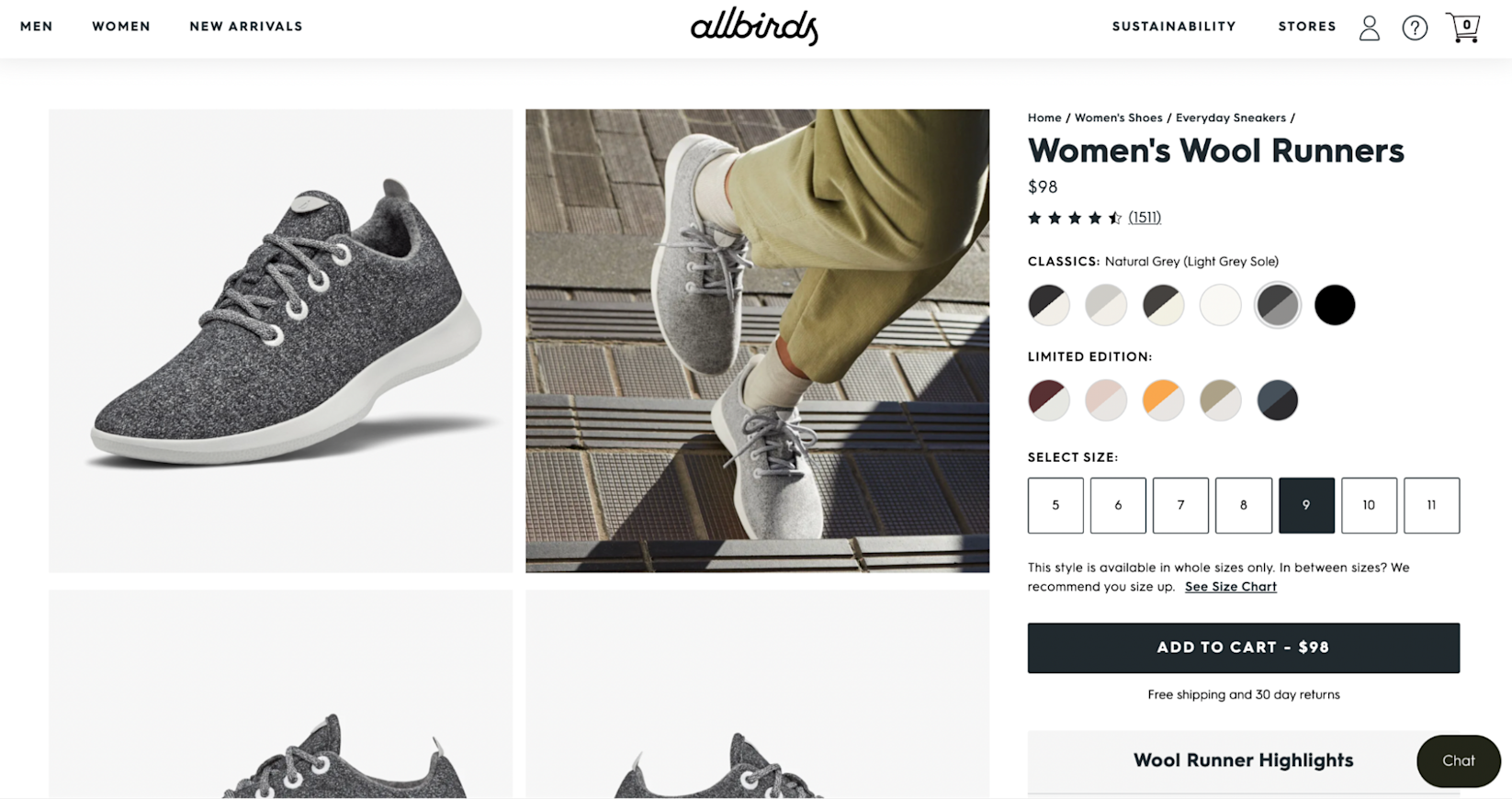
If your visitors are leaving at a cart page, consider setting up a cart abandonment campaign to bring them back to your site. (The average desktop cart abandonment rate is about 70%; a simple drip email campaign can be a valuable second chance at a first impression.)
Another way to mitigate cart abandonment is with a simple checkout experience. If visitors can’t find it, don’t trust it, or don’t feel like navigating through it, they likely won’t convert to customers.
Your ecommerce checkout experience directly affects the success of your store—18% of visitors abandon their cart due to a complicated checkout process. A simple one-click checkout (like Shop Pay) has been shown to increase conversion rates by 35%.
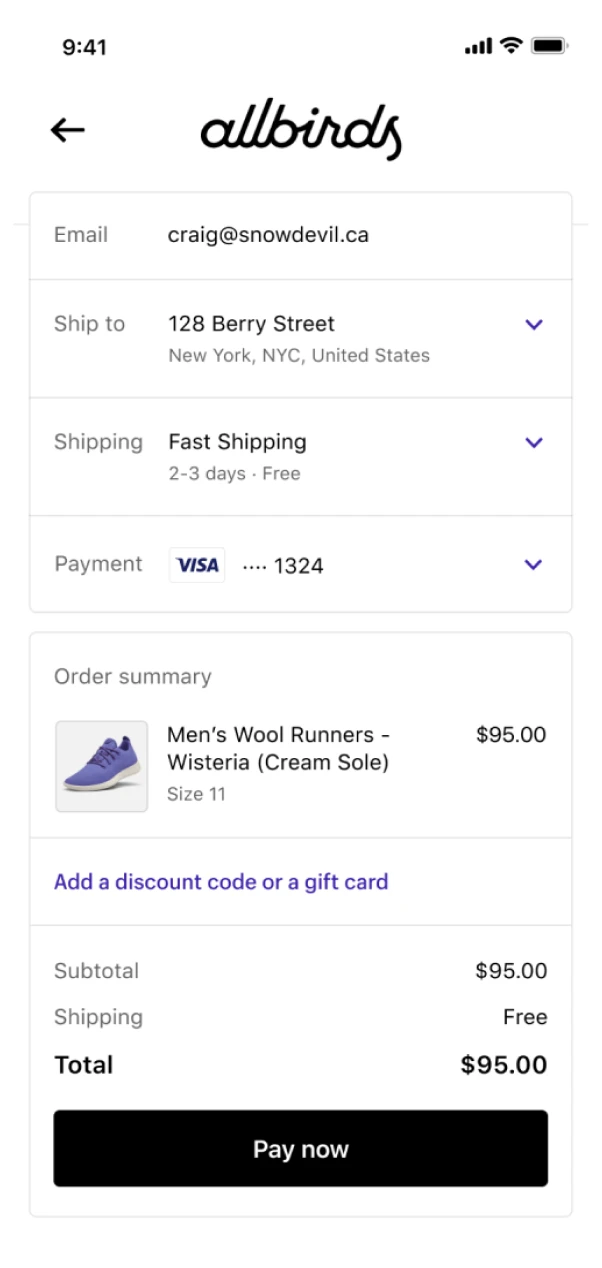
4. Sessions by device
As we acknowledged before, improving your ecommerce website CRO is about appealing to how your customers shop. One way to do this is by meeting them where they are—by understanding whether they shop on their desktop, mobile device, or tablet.
YourSessions by Device reportin Shopify shows you what devices visitors are using to access your site. You can also see a breakdown of this data on your Overview dashboard.
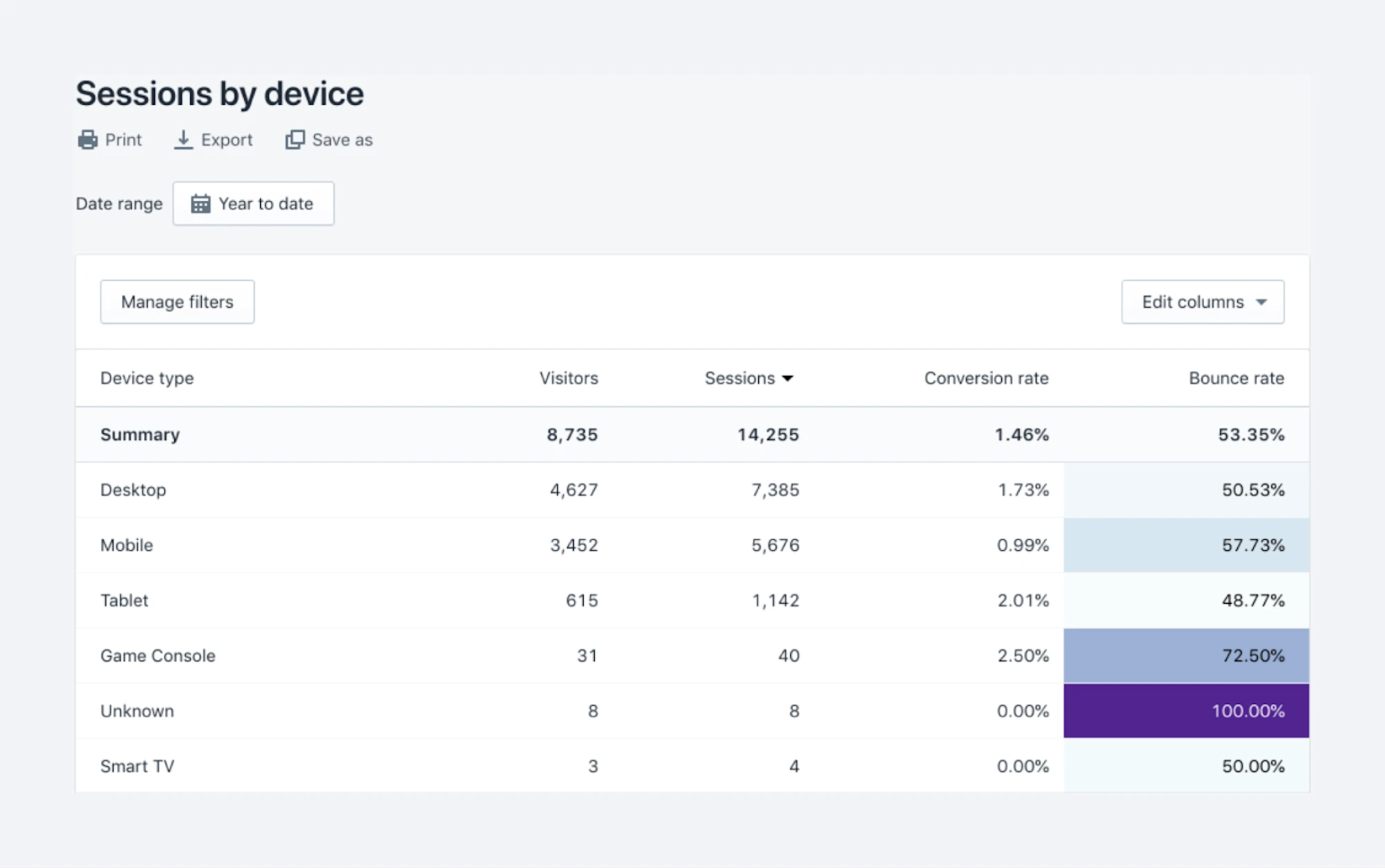
Did you know that global consumer mobile spending is anticipated to reach$270 billion by 2025?Fifteen percent of US adultsonly have access to the internet via their smartphones, andover 50% of shoppersstop visiting ecommerce sites with lousy mobile experiences.
Your shopping experience matters, and the device on which your shoppers browse can directly impact whether or not they make a purchase.
Google Analytics can also help you dig deeper into how your visitors shop.
Click User > Tech and review the Users by Browser, Users by Device category and Users by Operating system reports to examine what technology your visitors use to check out your site.

So, what should you do with this information? “If you see very low conversion rates or super high bounce rates on certain devices, that may mean the shopper experience is broken on those devices,” says Birkett. “Use a test called BrowserStack to QA your site experience through different platforms, like Android or iPhone.”
You can also manually review each browser and device UX. Visit your ecommerce store on any browsers and devices with high bounce rates and walk through the checkout process. Are all links intact? Is it easy to read your site copy or recognize your product images? Is the menu accessible? Is your site loading quickly?
If your answer is no, return to the drawing board and improve the shopping experience on these devices. You’ll see your conversion rate improve in turn.
5. Sales by product
This product performance report helps you understand campaign attributions. You can see which individual products are selling and which aren’t. As a result, you’ll know what your customers care about. Additionally, you can find out what products your customers like, so you can invest in products that convert.
For example, if you’re promoting a new product, you can track how products perform promoted versus organically. If a product does good without promotions, you can build personalized campaigns that improve conversions and marketing efforts.
Increase ecommerce conversion rates: better analytics, better tests
Optimizing your ecommerce website conversion rate isn’t a mystery, it just requires a healthy relationship with your analytics platforms.
Start with these five reports to understand what your visitors are thinking when they visit your website. You’ll soon learn how to turn those digital window shoppers into loyal customers.
To read more about ecommerce conversion rates, check out our guide toadvanced CRO tactics.
Want to get deeper insights into your customers’ shopping experience? You can save time analyzing a ton of reports by working with one of our technology partners.
Ecommerce Analytics FAQ
What are reports in ecommerce?
An ecommerce report shows you information about your sales and how customers make purchases. It’s designed to help you make smart decisions about your inventory, pricing, product variants, and other essential store functionalities.
What are the four Google Analytics reports?
- Traffic
- Navigation summary
- Traffic from organic search
- Conversions
What should be included in a website analytics report?
Website analytics reports should show key metrics like traffic, engagement, and conversions broken down by source. It should analyze organic search, paid search, display advertising, social media referrals, and other key sources separately, since each marketing channel has its own volume and performance.
What are the 6 basic Google Analytics ecommerce reports?
- Users
- Ecommerce conversion rate
- Average order value (AOV)
- Customer acquisition cost
- Return on advertising spend
- Abandonment rate
Read More
- 6 Best Open-Source Ecommerce Platforms for 2023
- 11 Ecommerce Checkout Best Practices: Improve the Checkout Experience and Increase Conversions
- Six Must-Have Technologies to Build the Best Ecommerce Tech Stack
- The Best Business Podcasts For Ecommerce Leaders
- Brand Building Best Practices: Statistics, Trends & Strategy
- Ecommerce Tech Stacks: 4 Factors to Consider
- The Best Tools to Help You Improve Your Ecommerce Conversion Rates
- How to Choose An Enterprise Ecommerce Platform






